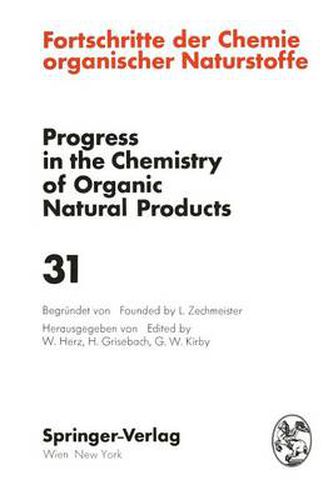Readings Newsletter
Become a Readings Member to make your shopping experience even easier.
Sign in or sign up for free!
You’re not far away from qualifying for FREE standard shipping within Australia
You’ve qualified for FREE standard shipping within Australia
The cart is loading…






This title is printed to order. This book may have been self-published. If so, we cannot guarantee the quality of the content. In the main most books will have gone through the editing process however some may not. We therefore suggest that you be aware of this before ordering this book. If in doubt check either the author or publisher’s details as we are unable to accept any returns unless they are faulty. Please contact us if you have any questions.
The verrucarins and roridins are secondary metabolites of the soil fungi Myrothecium verrucaria (Albertini et Schweinitz) Ditmar ex Fries and Myrothecium roridum Tode ex Fries. The species Myrothecium belongs to the fungi imperfecti, order of Moniliales, family Tubercularia- ceae (30, 17, 32). The distinction between these and other closely related fungal species is difficult. It has been studied and discussed by various authors (82, 16, 55, 75, 62, 43). Myrothecium species are parasitic on leaves of Gardenia, tomatoes, violets, kidney beans, snapdragons and other common plants. They are also found on decaying tissue and in soil. It was known earlier that cultures of the two species mentioned exhibit cellulolytic properties due to the presence of a very active cellulase which was used for the treatment of cellulose during the production of textiles [for leading references see (42, 66)]. The first investigation of the secondary metabolites of these micro- organisms was carried out by BRIAN and MCGOWAN (16). They isolated a crystalline compound, designated as glutinosin and assigned the formula C4sH60016, from cultures of Metarrhizium glutinosum S. Pope, which in fact is a Myrothecium species (82, 55). Glutinosin exhibited anti- fungal activity. Eight years later BOWDEN and SCHANTZ (14) described the isolation and characterization of a dermatitic or skinirritating crystal- line compound melting at 38 , and possessing the formula C H 04, 1s 22 from culture filtrates of Myrothecium verrucaria. They suspected the presence of additional biologically active substances.
$9.00 standard shipping within Australia
FREE standard shipping within Australia for orders over $100.00
Express & International shipping calculated at checkout
This title is printed to order. This book may have been self-published. If so, we cannot guarantee the quality of the content. In the main most books will have gone through the editing process however some may not. We therefore suggest that you be aware of this before ordering this book. If in doubt check either the author or publisher’s details as we are unable to accept any returns unless they are faulty. Please contact us if you have any questions.
The verrucarins and roridins are secondary metabolites of the soil fungi Myrothecium verrucaria (Albertini et Schweinitz) Ditmar ex Fries and Myrothecium roridum Tode ex Fries. The species Myrothecium belongs to the fungi imperfecti, order of Moniliales, family Tubercularia- ceae (30, 17, 32). The distinction between these and other closely related fungal species is difficult. It has been studied and discussed by various authors (82, 16, 55, 75, 62, 43). Myrothecium species are parasitic on leaves of Gardenia, tomatoes, violets, kidney beans, snapdragons and other common plants. They are also found on decaying tissue and in soil. It was known earlier that cultures of the two species mentioned exhibit cellulolytic properties due to the presence of a very active cellulase which was used for the treatment of cellulose during the production of textiles [for leading references see (42, 66)]. The first investigation of the secondary metabolites of these micro- organisms was carried out by BRIAN and MCGOWAN (16). They isolated a crystalline compound, designated as glutinosin and assigned the formula C4sH60016, from cultures of Metarrhizium glutinosum S. Pope, which in fact is a Myrothecium species (82, 55). Glutinosin exhibited anti- fungal activity. Eight years later BOWDEN and SCHANTZ (14) described the isolation and characterization of a dermatitic or skinirritating crystal- line compound melting at 38 , and possessing the formula C H 04, 1s 22 from culture filtrates of Myrothecium verrucaria. They suspected the presence of additional biologically active substances.